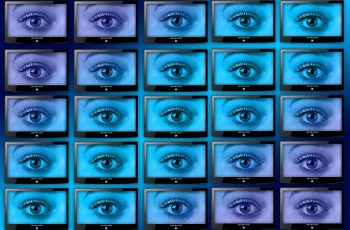What is your favourite colour? Choosing the right colours can make or break a design. The colours you use really do matter – they should be in keeping with the brand ethos and the role of the website.Every designer has their own preferences when it comes to the use of colour, but when designing for the web, there are standards to stick to. Naturally, the opinion and preferences of the client need to be taken into consideration and should be at the forefront of all that is done.
There are no hard and fast rules about different colours, they are all, to some degree, viewed subjectively by different users and whilst some may associate blue with calm and relaxation others may not. It’s about applying what you know in a broad sense and considering the audience. Crush keep these key things in mind when working with colour in your web design projects.
Usability
Usability has to come first. Poor colour choices can affect the functionality of a website and a website which doesn’t function properly is practically useless. Certain colour combinations just have to be avoided as they do nothing but induce headaches and eye strains in the user and this also goes for unstructured page layouts. Both colour and contrast need to be considered in equal measure to ensure legibility and usability are not hampered because you decided to try out a dodgy new colour scheme.
Contrast
Your background colour should have plenty of contrast with the text so the text can be seen and easily read. Most websites use a combination of black or dark grey text with a white background because this is what works best and is easiest to read for most people.
Links
Links are tricky as purist designers may tell you links should always be blue but other colours could work with your design. To conform to the world’s most popular sites and ensure your links are immediately recognisable as clickable blue is the sensible choice but choosing another colour isn’t necessarily going to hamper your design.
Limits
It is very easy to start designing a site and get carried away with colour. Even if you find a range of colours that all complement each other, there is too much of a good thing. The fewer the better seems to be the standard mantra amongst the industry and whilst this depends on the type of site you’re designing, limiting to 3 or 4 is probably be best. One way to get around this is to use shades within each colour, creating depth and allowing for more creativity with colour without going too far.
Persuasion
If you have 1-2 base colours then you can save your third and fourth choices for highlighting and bringing readers towards those calls to action and prominent items within the design. Key features such as Buy It Now or Sign Up Here buttons can be vibrant and stand out, but only if you have a colour scheme organised that allows them to.
Space
Spacing out your content and organising it effectively, with blocks of colour and still plenty of white space, ensures your website is designed for the modern user. The use of colour blocking and additional white space help guide your reader’s eye to the areas of most importance.
Using colour can bring a website to life but it has to be done in a way which is tasteful, effective and ultimately in line with the user’s requirements and delivering an experience which wows.



